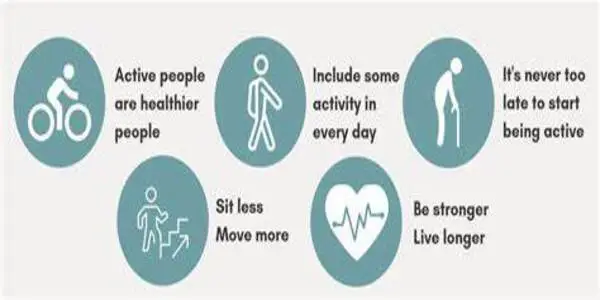A new wearables study involving over 25,000 participants gives the greatest evidence yet that small bursts of incidental movement, such as what we do on a daily basis, may reduce the risk of heart attack, stroke, and even premature mortality – but the time and intensity of the activity are important.
“In recent years, we’ve come to understand that it is not just structured exercise that is good for our health, but we know very little about how these short bouts of incidental activity translate to health benefits,” said the study’s senior author, Professor Emmanuel Stamatakis of the University of Sydney’s Charles Perkins Centre.
A team of international researchers led by the University of Sydney and including partners from the Universities of Glasgow, Edinburgh, Loughborough, and Oxford set out to answer that question in a study published today in The Lancet Public Health.
They analyzed the seven-day incidental physical activity patterns of 25, 241 UK people aged 42 to 78, down to a 10-second time window, using wrist-worn wearables data from the UK Biobank and machine learning. They then matched these physical activity micropatterns to individuals’ health records and followed them for nearly eight years to see how the length and intensity of physical activity bouts related to health status.
According to this study, people may be able to reduce their risk of major cardiac events by engaging in daily living activities of at least moderate intensity, ideally moving continuously for at least one to three minutes at a time.
Dr Matthew Ahmadi
In this cohort of people who self-reported no participation in exercise or sport they found;
- 97% of incidental physical activity was accrued in bouts lasting <10 minutes
- Short bouts of <10 minutes at a moderate to vigorous intensity were associated with a steep decrease in major cardiac events (heart attack/stroke) and death by any cause.
- Moving consistently for at least 1 to 3 minutes was associated with significantly more benefit (29% lower) than very short bouts <1 minute.
- The longer the bouts the better (e.g., accrued in 2 minutes vs 30 seconds), regardless of total activity levels.
- The higher the % of vigorous activity in each bout the better — those who huffed and puffed for at least 15% of the bout (roughly 10 seconds per minute) saw the greatest benefit.
- Bouts <1 minute were also associated with benefits if the above 15% vigorous activity rule was applied.
“According to this study, people may be able to reduce their risk of major cardiac events by engaging in daily living activities of at least moderate intensity, ideally moving continuously for at least one to three minutes at a time. Indeed, it appears that this can have health advantages comparable to larger periods lasting 5 to 10 minutes,” stated lead author Dr Matthew Ahmadi, Postdoctoral Research Fellow at the University of Sydney’s Charles Perkins Centre.

“The take-home message here is any type of activity is good for your health, but the more effort you put into those daily tasks and the longer you keep up that energy, the more benefits you are likely to reap,” said Professor Stamatakis.
“If you are huffing and puffing and unable to hold a conversation for some of that time you have hit the sweet spot.”
The study’s observational nature implies that researchers cannot prove a cause-and-effect relationship with certainty. However, the researchers made extensive use of the UK Biobank’s baseline health information, allowing them to account for a variety of characteristics such as food, smoking, alcohol intake, sleep, and sedentary time. They also took precautionary steps against the potential impacts of reverse causation, in which bad health may influence activity patterns, by omitting participants who had a cardiac incident within five years of the wearables measurement, were weak, or had poor self-rated health.
Why do we need to know more about incidental activity?
Only about one in every five middle-aged adults exercises on a regular basis. There are several reasons for this, including cost, time commitment, health status, and access to facilities or infrastructure, but the reality remains that the majority of people do not meet prescribed physical activity standards.
“The idea of accruing short bouts of moderate to vigorous activity through daily living activities makes physical activity much more accessible to people who are unwilling or unable to take part in structured exercise,” Dr. Ahmadi stated. “But as we see in this data, the length and the vigour people put into these incidental activities matters.”
According to the researchers, the study also provides some of the first direct evidence to support the idea that movement does not have to be completed in continuous 10 minute bouts to be beneficial – a widely held belief until the World Health Organization removed this from their physical activity guidelines in 2020, instead focusing on the idea that ‘every move counts towards better health’.
In their paper, the authors write: “If verified in future research, our findings could inform future public health messaging targeting the general population raising awareness of potential health benefits from short physical activity bouts in everyday life, especially for adults who do not or cannot exercise.”





